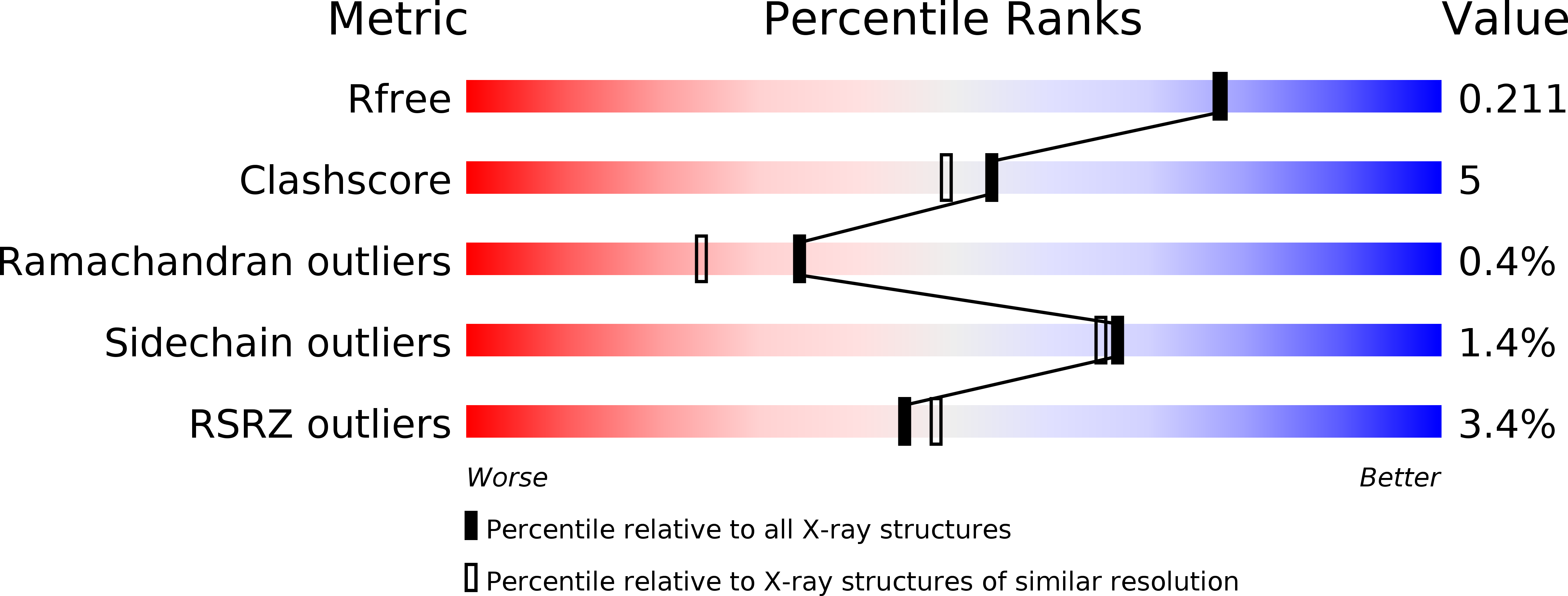
Deposition Date
2002-01-04
Release Date
2002-02-13
Last Version Date
2024-02-14
Entry Detail
PDB ID:
1KQD
Keywords:
Title:
Structure of Nitroreductase from E. cloacae Bound with 2e-Reduced Flavin Mononucleotide (FMN)
Biological Source:
Source Organism:
Enterobacter cloacae (Taxon ID: 550)
Host Organism:
Method Details:
Experimental Method:
Resolution:
1.90 Å
R-Value Free:
0.21
R-Value Work:
0.18
R-Value Observed:
0.19
Space Group:
P 1 21 1


